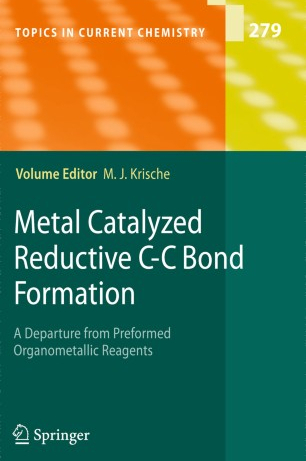
Metal Catalyzed Reductive C-C Bond Formation
Publication year: 2007
: 978-3-540-72879-5
The prototypical catalytic reductive C–C bond formations, the Fischer-Tropsch reaction [1] and alkene hydroformylation [2], were discovered in 1922 and 1938, respectively [3,4]. These processes, which involve reductive coupling to carbon monoxide, have long been applied to the industrial manufacture of commodity chemicals [5]. Notably, alkene hydroformylation, also known as the oxo-synthesis, has emerged as the largest volume application of homogeneous metal catalysis, accounting for the production of over 7 million metrictons of aldehyde annually. Despite the impact of these prototypical reductive C–C bond formations, this field of research lay fallow for several decades.
: Chemistry and Materials Science, Aldehyde, alkene, alkyne, carbon, catalysis, coupling reaction, metals, nickel, organometallic chemistry, synthesis